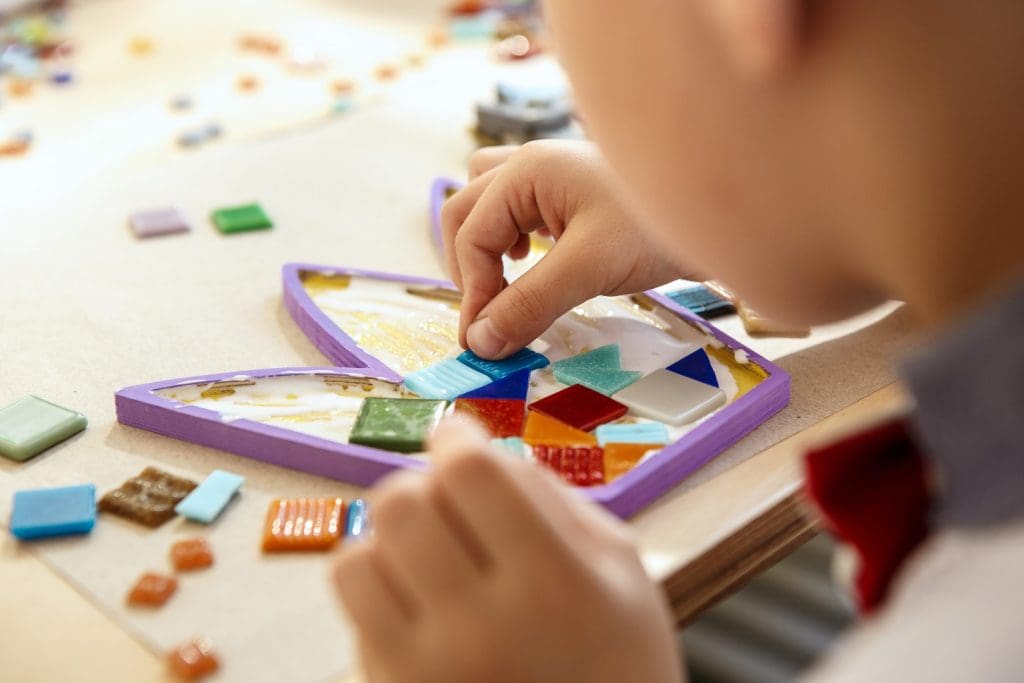Ms. Aditi Chatterjee

Why creativity should be taken seriously in schools?
“Creativity is as important as literacy and we should treat it with the same status”, says Sir Ken Robinson in a Ted talk. Creativity is a sense of purpose that lets you be in a happy zone and learn with fun. When talking about creativity in the current education scenario, we understand that the role of a teacher is changing from that of an instructor and repository of knowledge to that of a facilitator. As a result, the inherent potential of the learner is actualised and unleashed. Learning is no longer restricted to the confines of a structured classroom and limited to age-old methods of chalk and talk or rote learning. Learners learn, assimilate and comprehend best when left to discover and explore the world at their own pace and time. Critical thinking, collaboration, problem-solving, experimentation become the new tools of transformation. They help students evolve into lifelong learners.
Creativity comes from a sweet synthesis of the head, hands and heart. In a school system, the overwhelming emphasis is on exercising the cognitive dimension of a child’s personality, As a result, the heart and the hands, the affective and the psychomotor elements of the child’s personality largely go unattended. The information stored in our brain cells prevents us from striking new ideas. Out of the box thinking or creativity is nothing but all about thinking without the interference of memory. One way of honing these skills is to put the child in an unstructured situation, like a treasure hunt. This puts the child on a discovery path. The discovery process drowns out the child’s emotional and psychomotor competencies.
Research has revealed that creativity can be learned over a course of time if trained accordingly. We learn by doing and while planning and designing learning for students, teaching them how to think is more important than teaching them what to think.
When students create what they imagine, they’re in the driver’s seat and learn best.
When designing learning experiences and honing creative methodologies in the school system, teachers can plan and frame curriculum and provide tools that give students options, voice and choice in order to enable them to be creative.
The learning environment has to be fun and not fear. Students must feel at ease, secure and comfortable in their learning spaces to be able to unleash their creative potential.
Control, comparison and correction in the classroom are limiting factors that kill any natural instincts and the student’s imagination.
Integrating art as a pedagogical tool enhances these skills in a classroom.
Creative methodologies in the school system need to create such spaces which are conducive to learning, just like a farmer prepares the soil for the seed and the sprouting naturally happens.
Honing these skills in the student could happen when the teacher sets up learning activities that allow students to explore their creativity in relevant, interesting and worthwhile ways.
Valuing their creativity, appreciating, acknowledging and celebrating it with rewards.
Teaching the students other skills that they need to be creative, Follow-up discussions encourage deductive and active reasoning.
Teachers need to engage, inspire and enthuse students by removing constraints and creating conditions in which students will learn willingly and progressively.
Another way of honing creative methodologies in a school is to enable the child to learn coding skills. This involves the play of imagination, design thinking and a sense of adventure. Inviting the children to make a group video of a learning project is another way of seeding a culture of collaboration in them. Creativity flourishes most in semi-structured or unstructured problem-solving modes. The teacher’s primary job is to create a learning architecture for children where they learn to solve problems by themselves with minimum or no help from the teacher.


